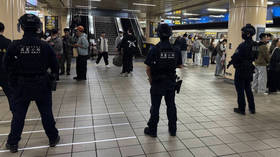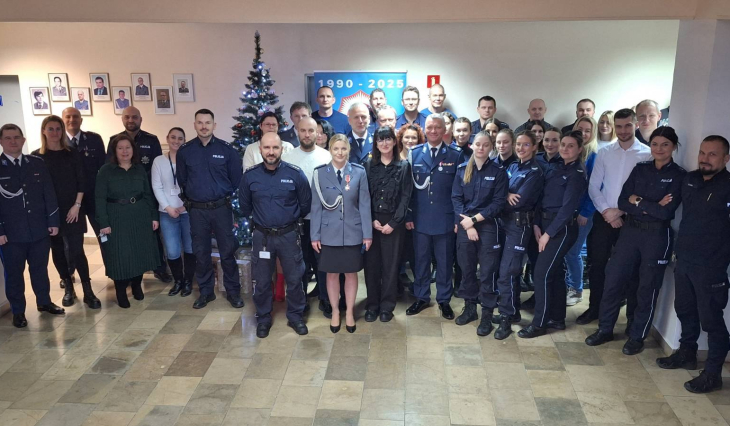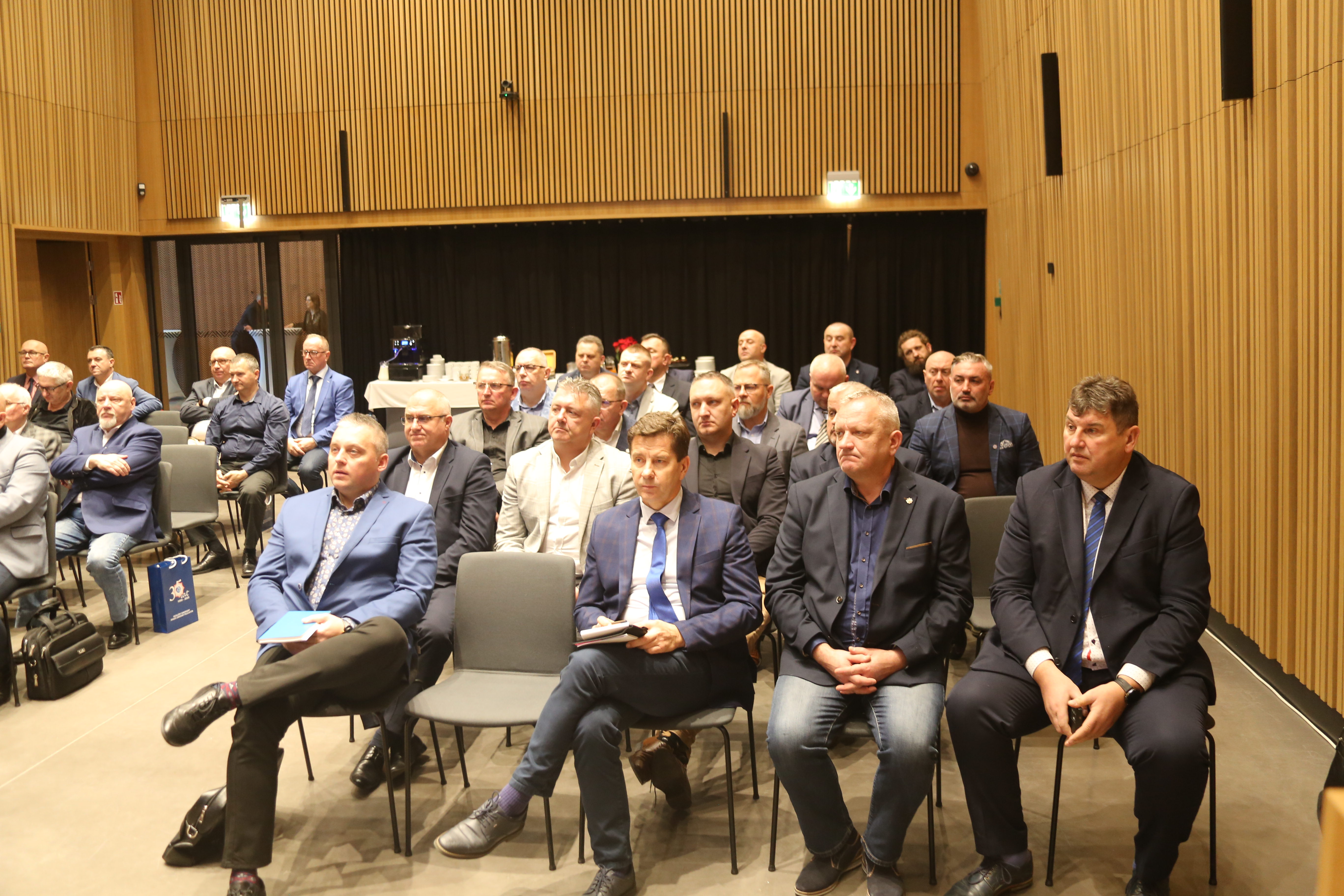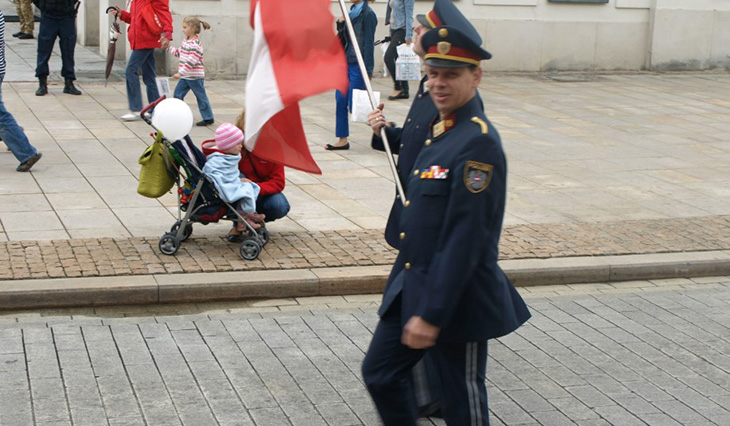
SINGAPORE— A China Eastern Airlines (MU) Boeing 777-300ER crew failed to respond to a go-around call, leading to a runway incursion involving another aircraft at Singapore Changi Airport (SIN).
The incident took place on 28 August 2024 and involved two China Eastern (MU) aircraft — a Boeing 777-300ER arriving from Shanghai Pudong (PVG) and an Airbus A320neo also inbound from Shanghai Pudong (PVG), according to the final report by the Transport Safety Investigation Bureau (TSIB).
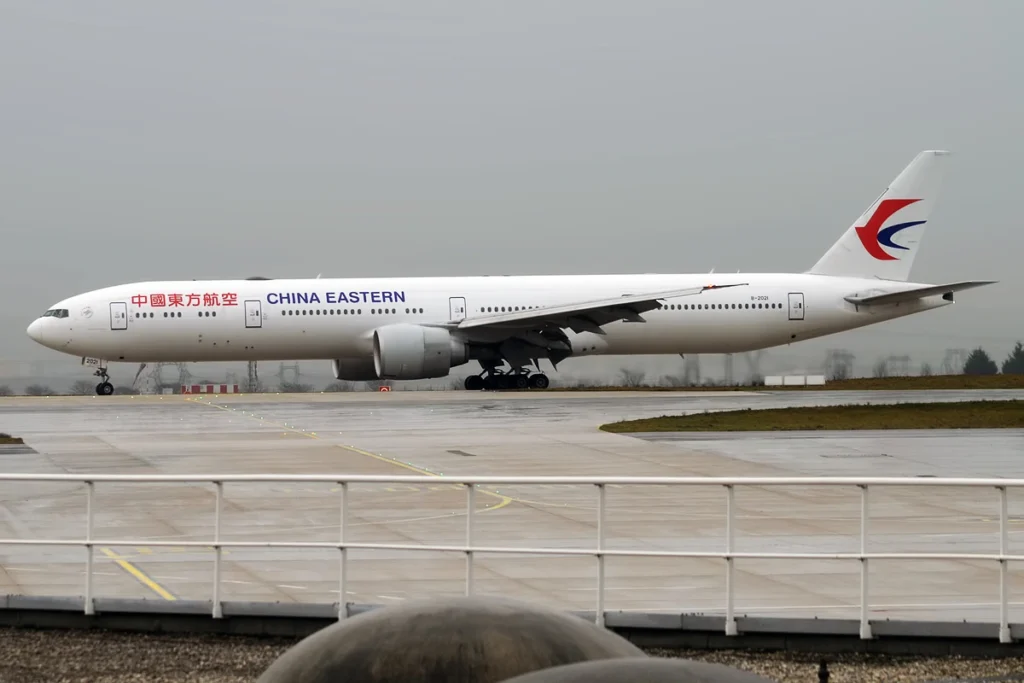 Photo: By Anna Zvereva from Tallinn, Estonia – China Eastern Airlines, B-2021, Boeing 777-39P ER, CC BY-SA 2.0, https://commons.wikimedia.org/w/index.php?curid=67096372
Photo: By Anna Zvereva from Tallinn, Estonia – China Eastern Airlines, B-2021, Boeing 777-39P ER, CC BY-SA 2.0, https://commons.wikimedia.org/w/index.php?curid=67096372China Eastern 777 Missed Go-Around
The sequence began when the China Eastern Airbus A320neo (registration B-30AV) landed on Runway 20R. The crew was instructed to vacate the runway via exit 7, which they acknowledged. However, the aircraft was moving too fast to use exit 6 and had to apply braking to slow down before turning into exit 7.
At the same time, the China Eastern Boeing 777-300ER (registration B-2021) had been cleared to land on the same runway. Recognizing that separation between the two aircraft was becoming tight, air traffic control asked the A320neo crew to expedite its vacating.
The pilots, already slowing into exit 7, hesitated about proceeding onto taxiway W until further clearance was given.
The controller then instructed the A320neo to turn immediately onto taxiway W, while also ordering the Boeing 777, by then just 76 feet above ground and 296 meters from the threshold, to go around.
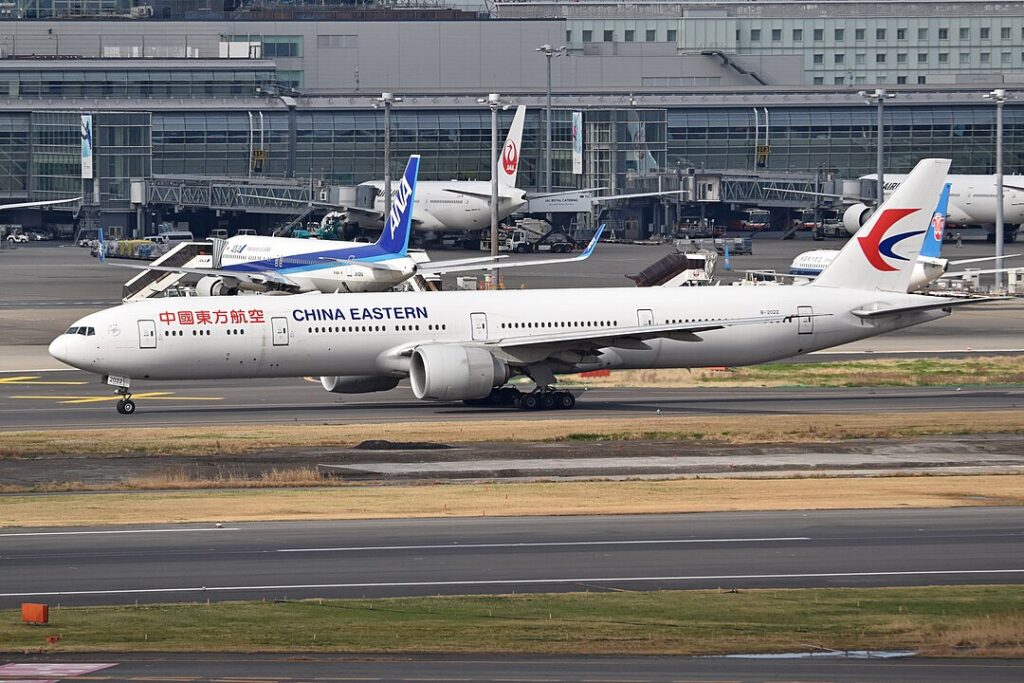 Photo: By Alan Wilson from Peterborough, Cambs, UK – Boeing 777-39PER ‘B-2022’ China Eastern, CC BY-SA 2.0, https://commons.wikimedia.org/w/index.php?curid=80668437
Photo: By Alan Wilson from Peterborough, Cambs, UK – Boeing 777-39PER ‘B-2022’ China Eastern, CC BY-SA 2.0, https://commons.wikimedia.org/w/index.php?curid=80668437Missed Go-Around Call
According to TSIB, the Boeing 777 crew did not acknowledge the go-around instruction and proceeded to land. At that moment, the Advanced Surface Movement Guidance and Control System triggered visual and aural warnings on the controller’s screens.
The controller determined that the A320neo’s tail had cleared the runway edge, so a go-around was no longer necessary. Both aircraft continued taxiing and parked safely at their respective terminals without further incident.
Later, the 777’s flight crew stated they had not heard the go-around call. Investigators found that the aircraft’s Enhanced Ground Proximity Warning System (EGPWS) was issuing altitude call-outs at the same time, likely masking the air traffic controller’s transmission.
The go-around instruction had also followed immediately after a radio call to the A320neo, which may have contributed to the missed communication.
Following the occurrence, the Civil Aviation Authority of Singapore (CAAS) reminded controllers via email to remain vigilant and to issue go-around instructions without hesitation when a potential loss of separation arises.
The case has since been incorporated into operational training as a case study. China Eastern also reminded its pilots to be especially attentive to low-altitude go-around instructions.
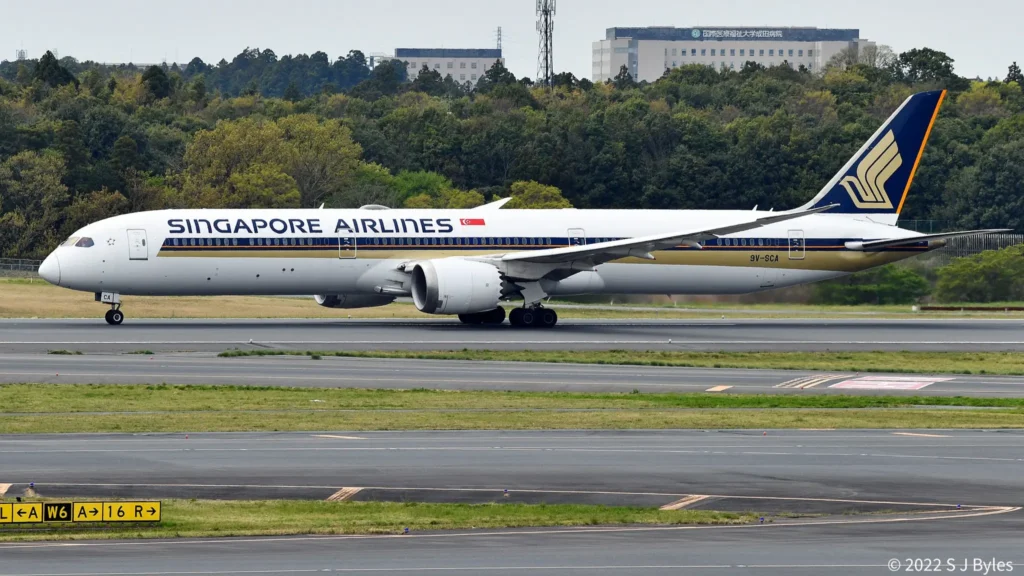 Photo: Steven Byles | Flickr
Photo: Steven Byles | FlickrSimilar Incident
A Singapore Airlines (SQ) Boeing 787-10 Dreamliner overran the runway at Tokyo Narita Airport (NRT) on July 20, 2025. The aircraft, operating as flight SQ638 from Singapore Changi Airport (SIN), came to a stop at low speed with no injuries reported.
The incident occurred during landing on Runway 16L at approximately 07:59 local time. The aircraft stopped with its nose gear in the runway end safety area (RESA) and required towing assistance before it was cleared for service.
Details of the Incident
The aircraft involved, registered 9V-SCJ, is a 6.3-year-old Boeing 787-10 Dreamliner. It departed Singapore Changi (SIN) on July 19 and landed at Tokyo Narita (NRT) on July 20 at 07:59 local time (22:59Z).
During touchdown on Runway 16L, which measures 2,500 meters (8,200 feet) in length, the jet reportedly rolled past the runway threshold at about 15 knots ground speed. The aircraft came to a complete stop in the paved RESA, designed to enhance safety in such overruns.
Airport emergency and ground services responded quickly. Approximately 40 minutes later, the aircraft was towed back to a safe location on the tarmac for inspection.
Aircraft and Technical Assessment
Following the incident, ground personnel carried out detailed checks on the Boeing 787-10. No immediate damage or technical malfunctions were identified. The aircraft was later cleared to resume operations.
However, the return flight to Singapore was delayed by roughly 3.5 hours. This was due to the time required for towing, safety inspections, and repositioning procedures before the aircraft could be released for service.
Runway 16L at Narita, at 2,500 meters in length, is considered shorter compared to other primary runways at the airport. Under certain operating and weather conditions, such length can become marginal for wide-body aircraft such as the Boeing 787-10.
While investigations will determine the exact contributing factors, the incident highlights the importance of runway length, braking performance, and environmental conditions in landing operations.
Stay tuned with us. Further, follow us on social media for the latest updates.
Join us on Telegram Group for the Latest Aviation Updates. Subsequently, follow us on Google News
Air India Kochi to Mumbai Flight with A320 Experienced Runway Excursion
The post China Eastern 777 Pilots Missed Go-Around at Singapore Investigated appeared first on Aviation A2Z.







